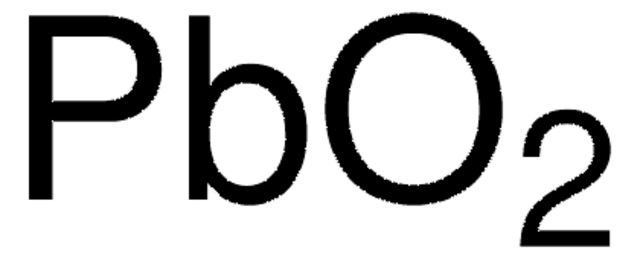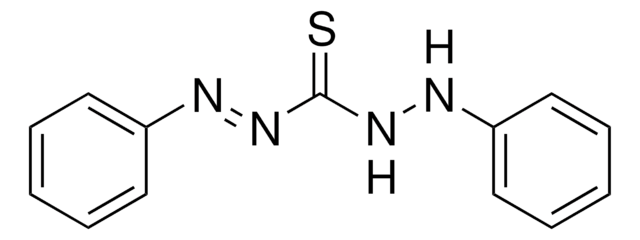15338
Lead(II) oxide
puriss. p.a., ≥99.0% (KT), yellow
About This Item
Productos recomendados
vapor pressure
10 mmHg ( 0 °C)
Quality Level
grade
puriss. p.a.
assay
≥99.0% (KT)
form
powder
impurities
≤0.001% total nitrogen (N)
color
yellow
pH
9.9 (20 °C, 100 g/L)
mp
886 °C (lit.)
anion traces
chloride (Cl-): ≤20 mg/kg
cation traces
Ca: ≤10 mg/kg
Cd: ≤5 mg/kg
Co: ≤5 mg/kg
Cr: ≤5 mg/kg
Cu: ≤5 mg/kg
Fe: ≤10 mg/kg
K: ≤50 mg/kg
Mg: ≤5 mg/kg
Mn: ≤5 mg/kg
Na: ≤50 mg/kg
Ni: ≤5 mg/kg
Zn: ≤5 mg/kg
SMILES string
O=[PbH2]
InChI
1S/O.Pb
InChI key
YEXPOXQUZXUXJW-UHFFFAOYSA-N
¿Está buscando productos similares? Visita Guía de comparación de productos
Categorías relacionadas
General description
Lead(II) oxide is a crystalline solid, which can be prepared by decomposition of lead carbonate or by heating molten lead in the presence of air. It can be used in the synthesis of lead(II) ethanoate by reaction with ethanoic acid.
signalword
Danger
Hazard Classifications
Acute Tox. 4 Inhalation - Acute Tox. 4 Oral - Aquatic Acute 1 - Aquatic Chronic 1 - Carc. 2 - Lact. - Repr. 1A - STOT RE 1
target_organs
Central nervous system,Kidney,Blood
Storage Class
6.1D - Non-combustible acute toxic Cat.3 / toxic hazardous materials or hazardous materials causing chronic effects
wgk_germany
WGK 3
flash_point_f
Not applicable
flash_point_c
Not applicable
Elija entre una de las versiones más recientes:
Certificados de análisis (COA)
¿No ve la versión correcta?
Si necesita una versión concreta, puede buscar un certificado específico por el número de lote.
¿Ya tiene este producto?
Encuentre la documentación para los productos que ha comprado recientemente en la Biblioteca de documentos.
Los clientes también vieron
Nuestro equipo de científicos tiene experiencia en todas las áreas de investigación: Ciencias de la vida, Ciencia de los materiales, Síntesis química, Cromatografía, Analítica y muchas otras.
Póngase en contacto con el Servicio técnico













